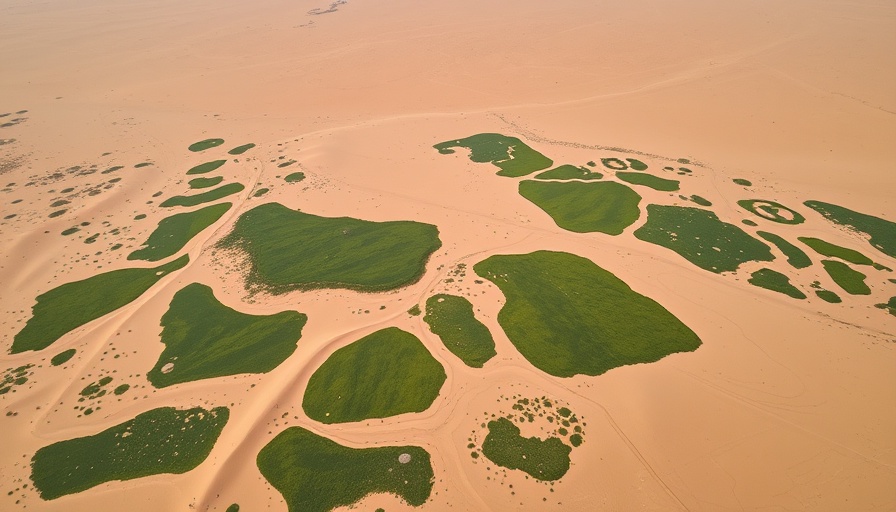
The Ghout of Souf: An Agricultural Wonder in Algeria
In the southeastern region of Algeria, nestled between windswept sand dunes, lies a unique agricultural marvel—the Ghout of Souf. This abyssal depression, known as Al-Ghout, reaches depths of 40 meters and spans between 80 to 200 meters in diameter. What sets it apart is its ingenious irrigation, facilitated by an aquifer that allows farmers to cultivate palm trees without direct intervention. This traditional system, referred to as the bali method, reflects a harmonious relationship between people and their environment.
Community and Heritage: The Heart of The Ghout
The rich history of the Ghout showcases resilience. Created through the collective effort of parents and grandparents, its continued existence symbolizes regional pride and perseverance. The inception of the ghout involves raising sand, often utilizing equipment like caddies and utilizing the laborious efforts of donkeys and mules. This agricultural practice not only preserves traditional methods but also ensures the sustenance of communities around the Wadi Souf.
A Scenic Jewel: Nature's Bounty
Visually, Al-Ghout is a treasure trove. Imagine vibrant greenery framing the golden sands, particularly breathtaking during sunrise and sunset. The Food and Agriculture Organization (FAO) recognized the uniqueness of this agricultural landscape when it classified it as a world heritage site in 2009. The palm trees, often admired by travelers, serve not only as a livelihood but as cultural symbols amidst the unforgiving desert.
Reviving Lost Glory: The Future of Ghout Agriculture
Despite the allure of the ghout, the challenges it faces are significant. Once a bustling draw for international tourists, these palm oases have seen a decline since the 1970s and 1980s. However, there’s hope on the horizon as the FAO and local governments work to preserve this important cultural heritage. By sustaining the traditional methods of cultivation without modern technology, there is a movement towards revitalization, respecting both heritage and agricultural practices.
Conclusion: Embrace the Beauty of Al-Ghout
The Ghout of Souf is more than just a site of agricultural significance; it is a testament to human ingenuity and the beauty of nature. As travelers and adventurers seek out unique experiences, the allure of the Ghout lies in its historical richness and scenic charm. Whether you’re a cultural enthusiast or simply looking for breathtaking landscapes, the Ghout is a destination that inspires wonder and appreciation for the people and traditions that shaped it.
 Add Row
Add Row  Add
Add 




Write A Comment